Myths and facts about assistive technology: New guidance
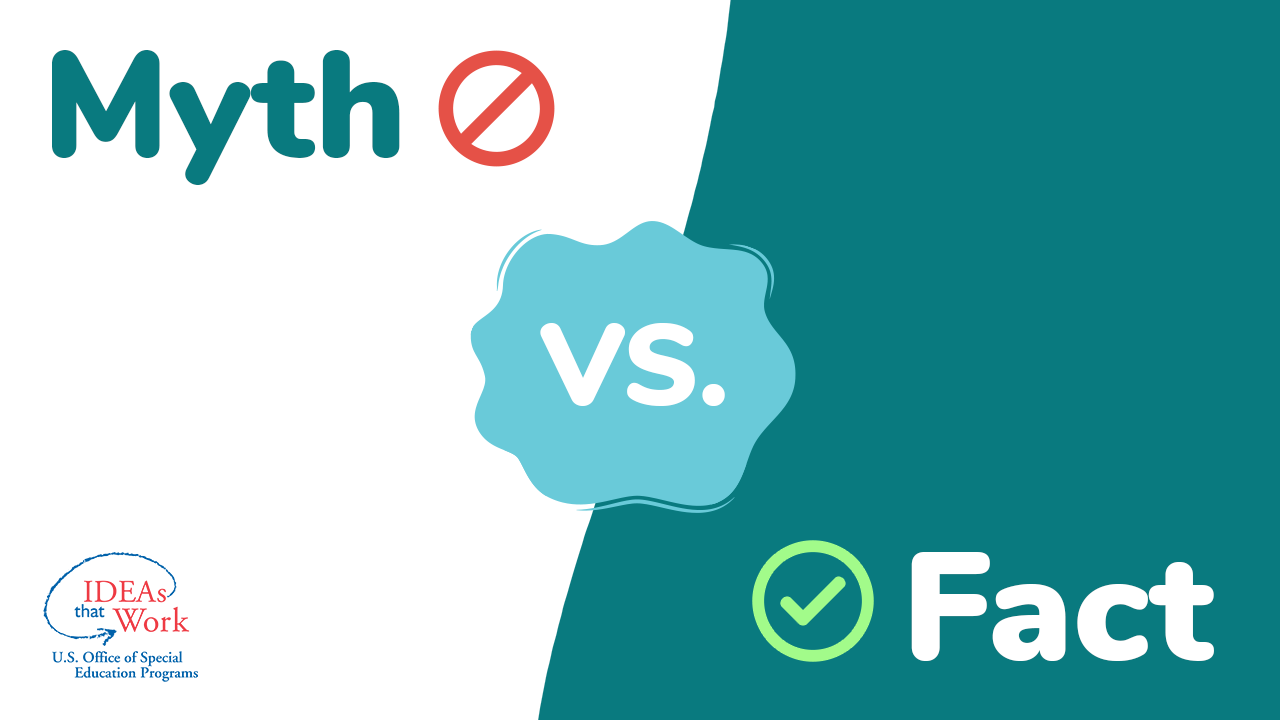
Assistive technology (AT) offers a multitude of benefits across all age groups by fostering independence, supporting inclusion, facilitating friendships, and leading to improved overall quality of life. For young children, it facilitates opportunities for play, learning, friendships, and development by providing tailored educational tools, enhancing communication skills through augmentative and alternative communication, and enabling access to academic materials. In older students, it provides access to instructional activities, improves learning outcomes, and supports social relationships. When moving into adulthood, AT promotes workplace productivity, supports individuals with disabilities in fulfilling employment roles, and facilitates daily tasks such as communication, organization, and navigation. Assistive technology is often the path to independence, self-confidence, and maximizing potential and engagement in many activities.
AT identification and provision raises many questions in the educational field. Are you ever confused about who is responsible for identifying the right AT to meet an individual student’s needs or who is responsible for paying for the AT? Do you also wonder what exactly is an AT service and which staff are responsible for providing these services? Sometimes, questions such as these lead to the under-identification of AT and the lack of both device and service provision. Recently, the Offices of Special Education and Rehabilitative Services (OSERS) and Education Technology (OET) co-created newly released guidance (January, 2024) in the form of Myths and Facts about assistive technology to help administrators, educators, and families understand the Individuals with Disabilities Education Act’s (IDEA) requirements about AT devices and services. The intent of this guidance was to clarify misconceptions about AT and to provide real-life examples of AT devices and services for students with disabilities.
The intent of this guidance was to clarify misconceptions about AT and to provide real-life examples of AT devices and services for students with disabilities.
CAST’s Center on Inclusive Technology and Education Systems (CITES) developed a set of graphics to help describe these Myths and Facts for both Part C and Part B programs. The graphics were designed to help facilitate AT conversations in early intervention and school programs. A few examples are shown below.
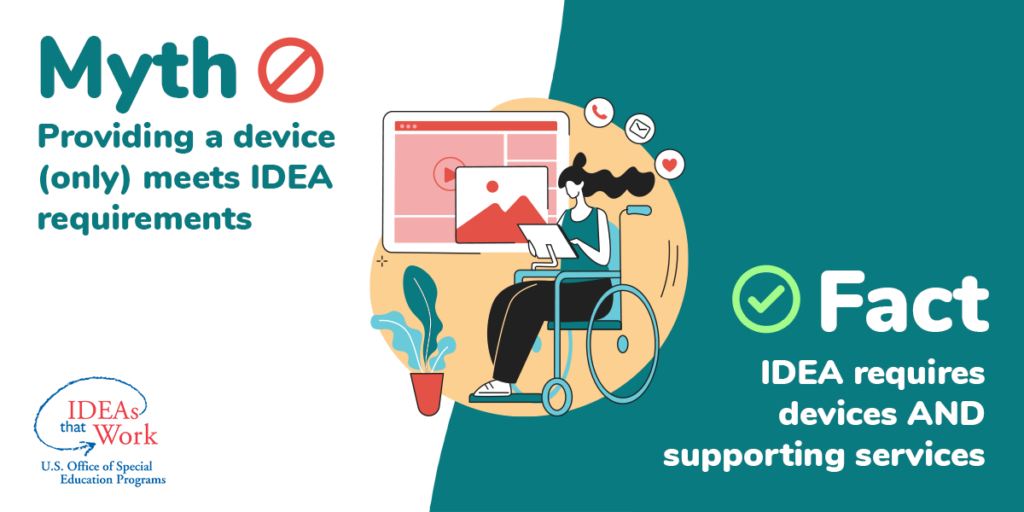

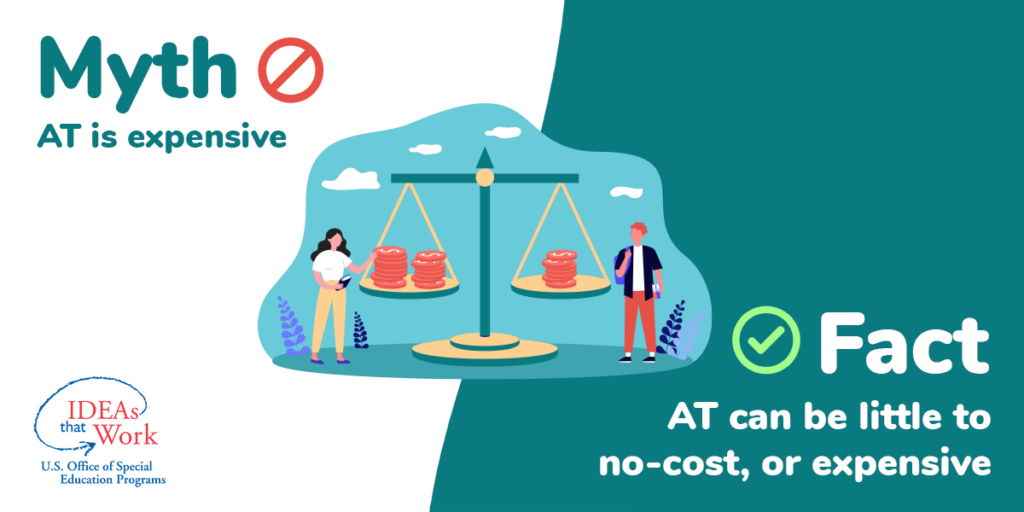
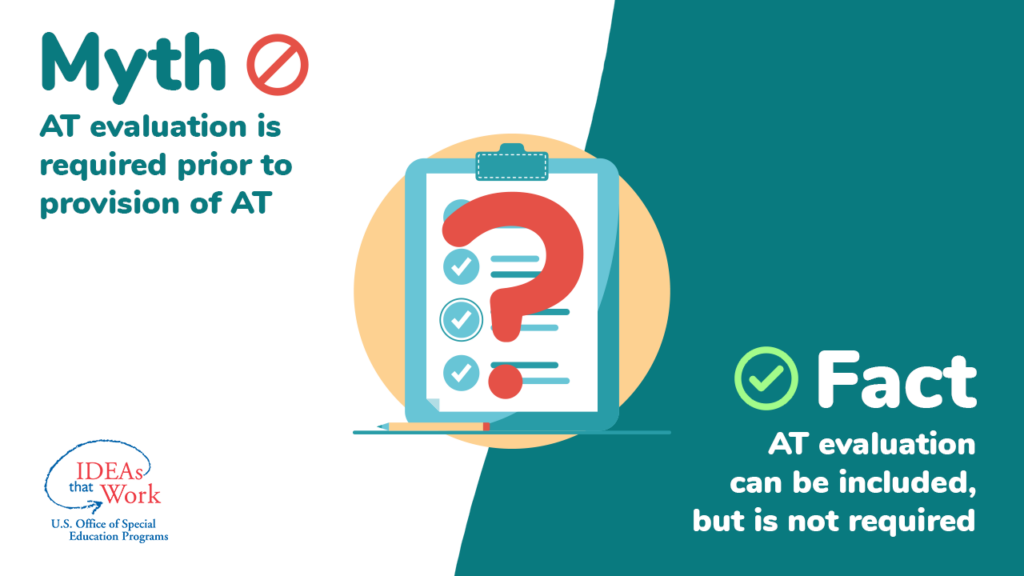
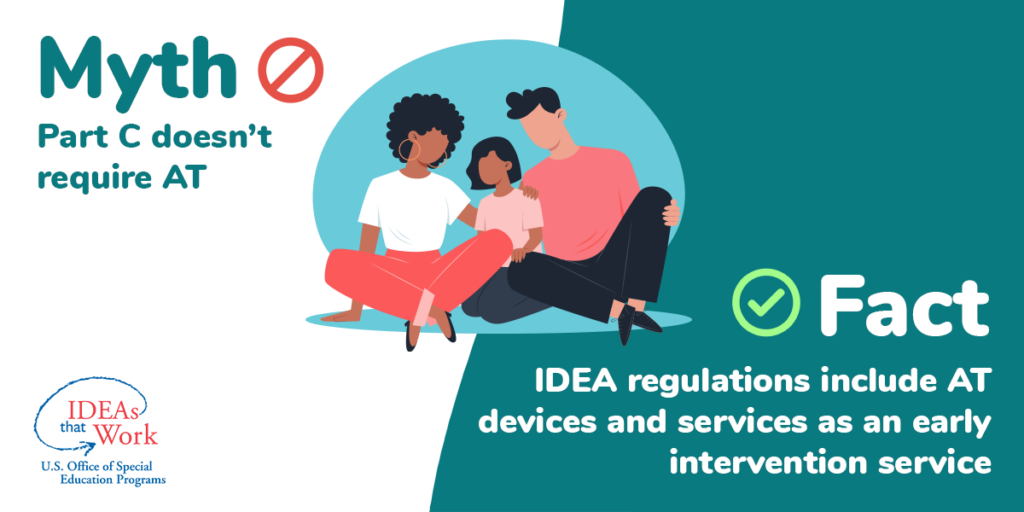
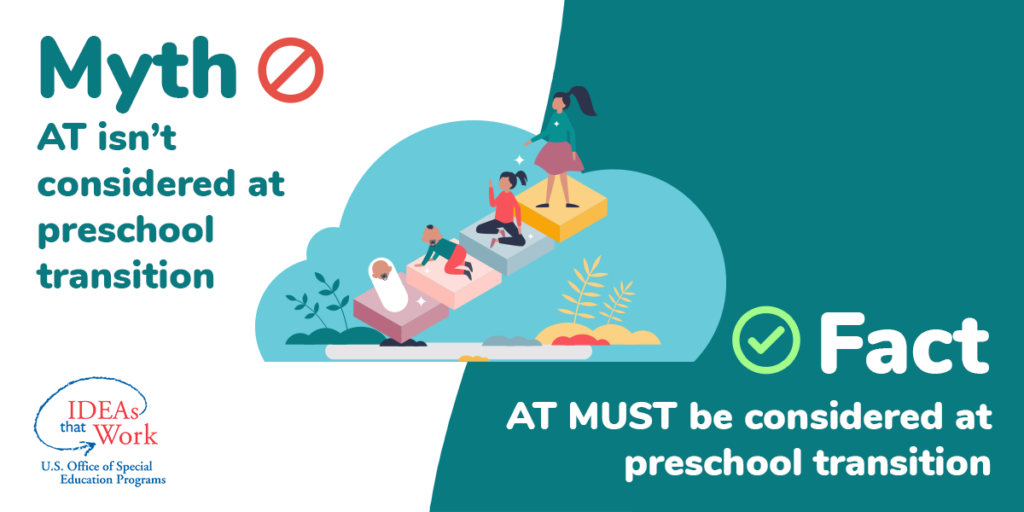
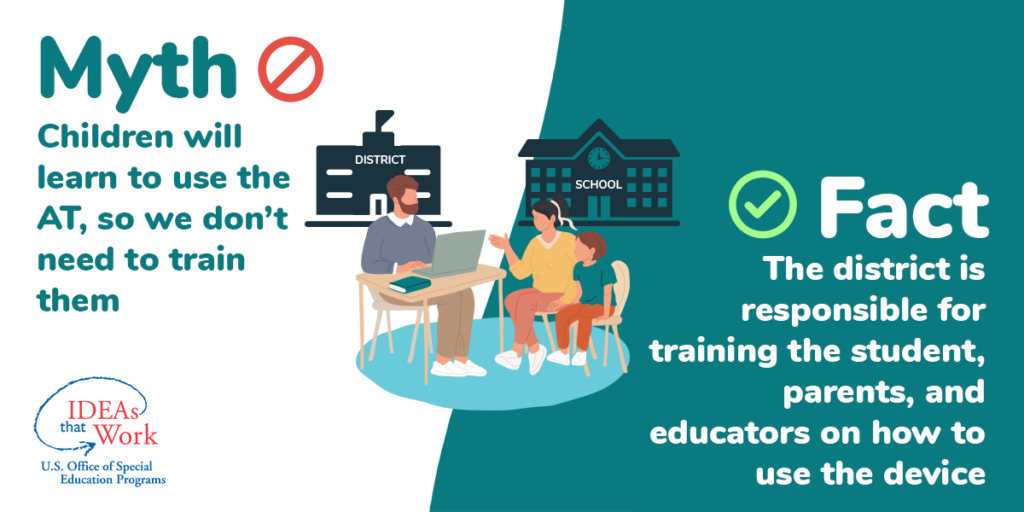
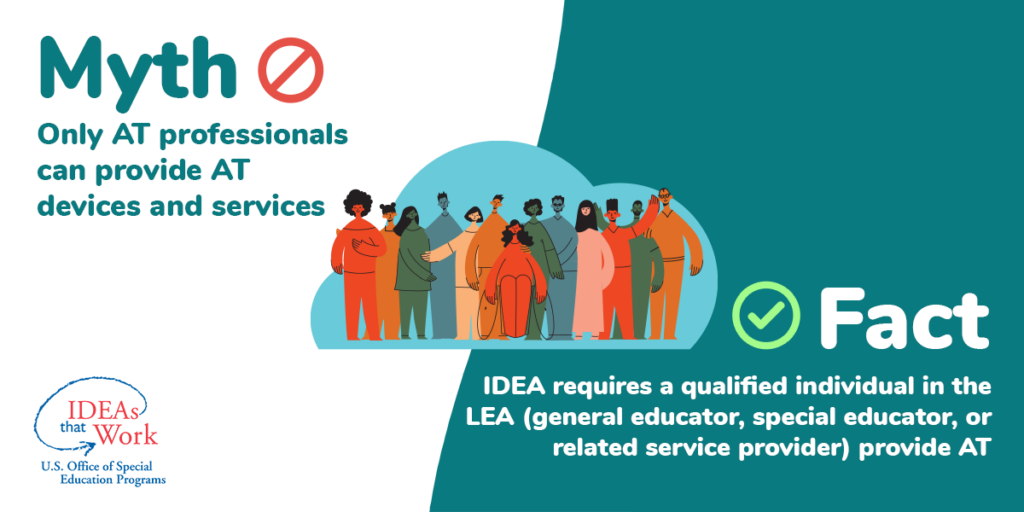
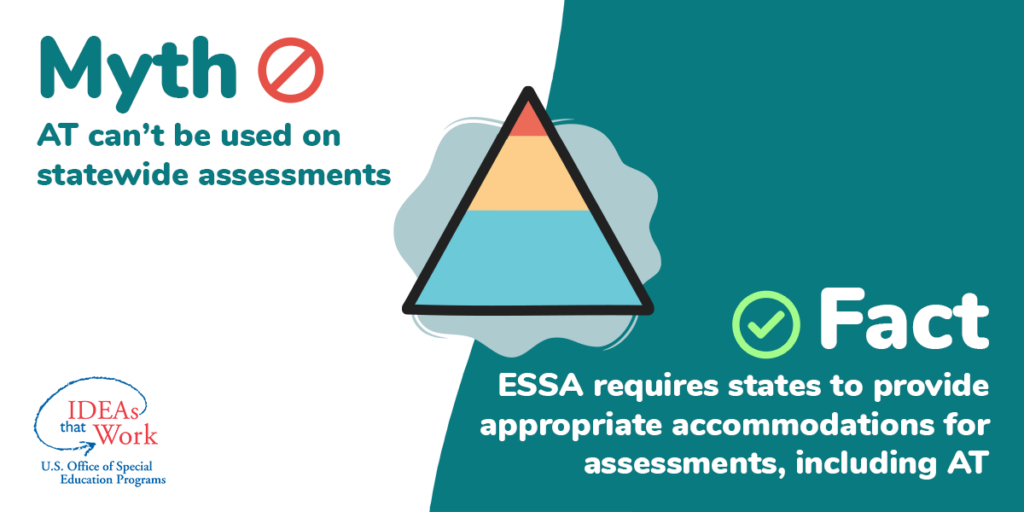
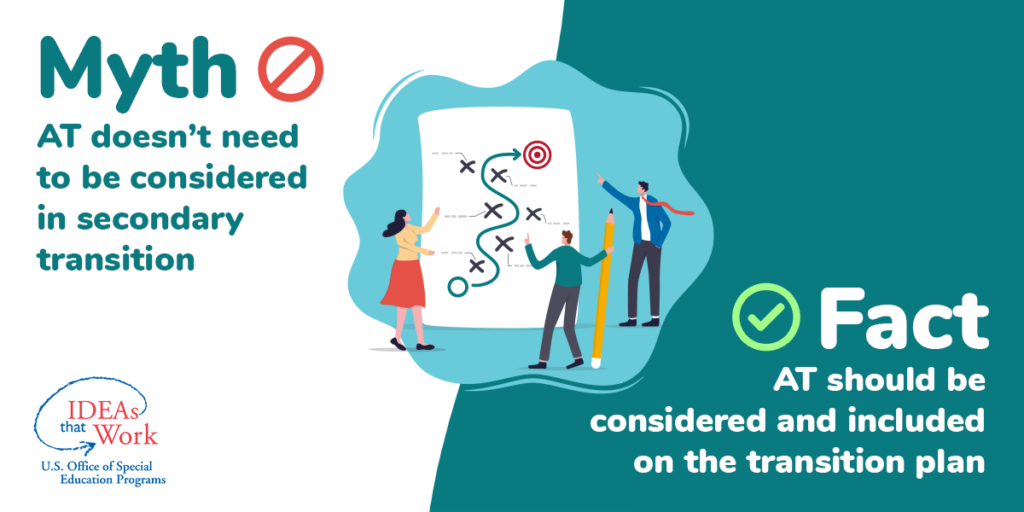
For additional information, follow the links below to the Dear Colleague Letter and the Myths and Facts guidance document.
Myths and Facts Surrounding Assistive Technology Devices and Services
References
AT guidance myths and facts graphics. (2024, March). CAST’s Center on Inclusive Technology and Education Systems. https://cites.cast.org/get-started/myths-facts
U.S. Department of Education (2024, January). Myths and facts surrounding assistive technology devices and services. Individuals with Disabilities Education Act. https://sites.ed.gov/idea/files/Myths-and-Facts-Surrounding-Assistive-Technology-Devices-01-22-2024.pdf
Gallo-Wright, G and Rodriguez, R. (2024, January). Dear colleague letter. U.S. Department of Education.
For more information about AT Myths and Facts, contact Sharon Jones, ([email protected]), Statewide Distance Education and AT Coordinator and Program Specialist, T/TAC at VCU.
Categories Assistive Technology, Autism, Behavior, Early Childhood Special Education, Inclusive Practices, Intellectual Disabilities, Math, Reading, Secondary Transition